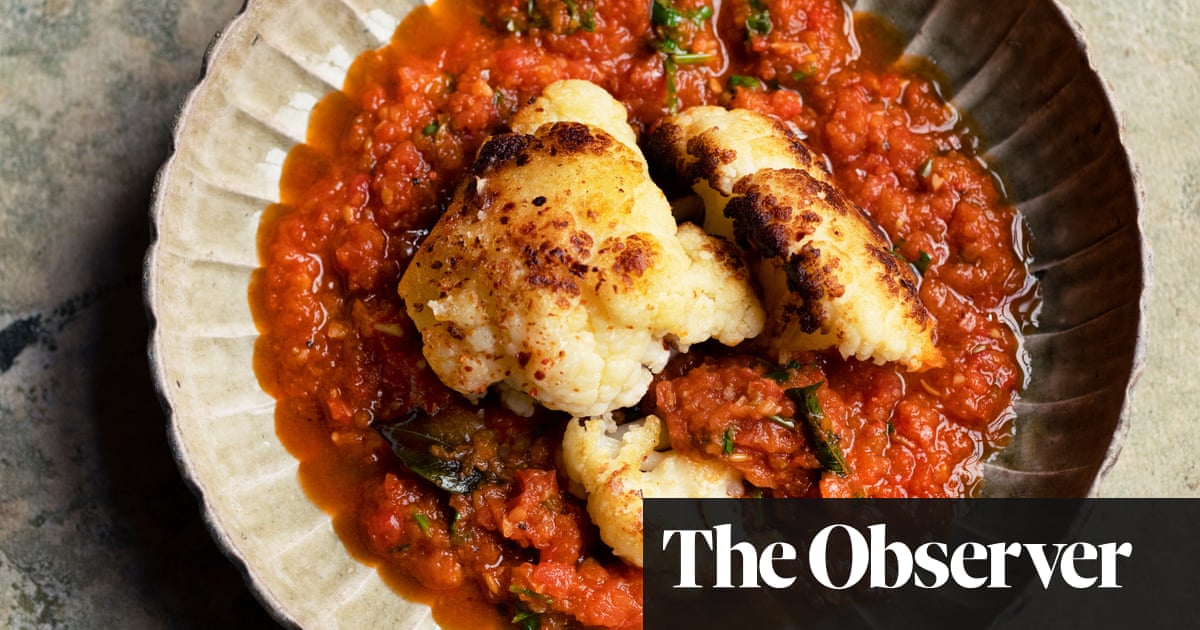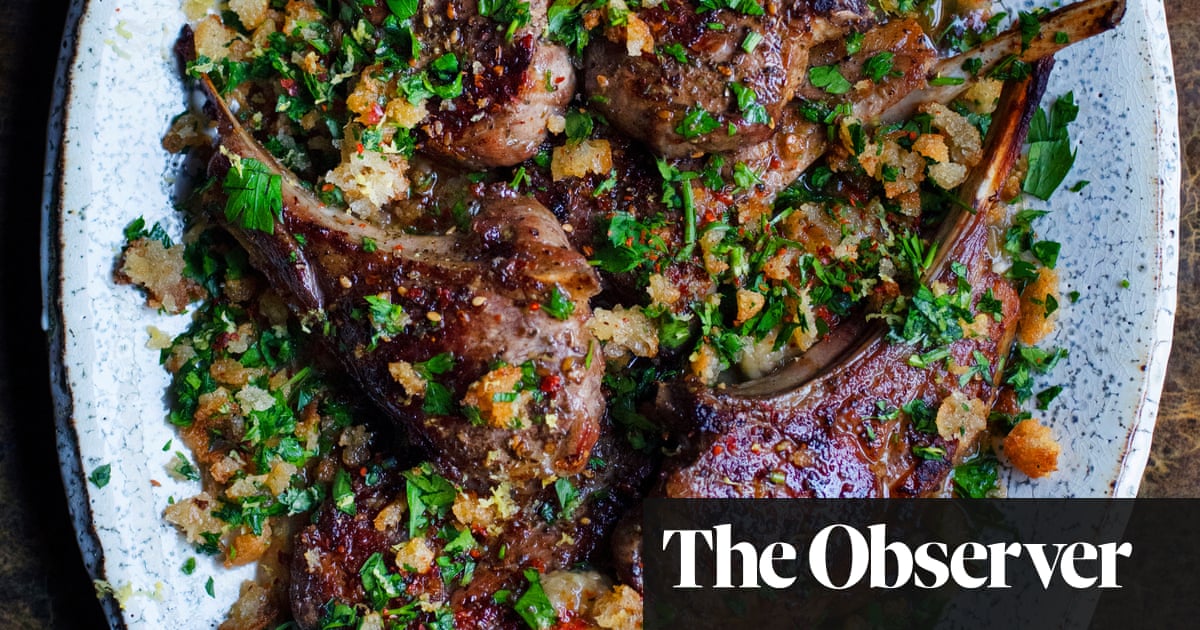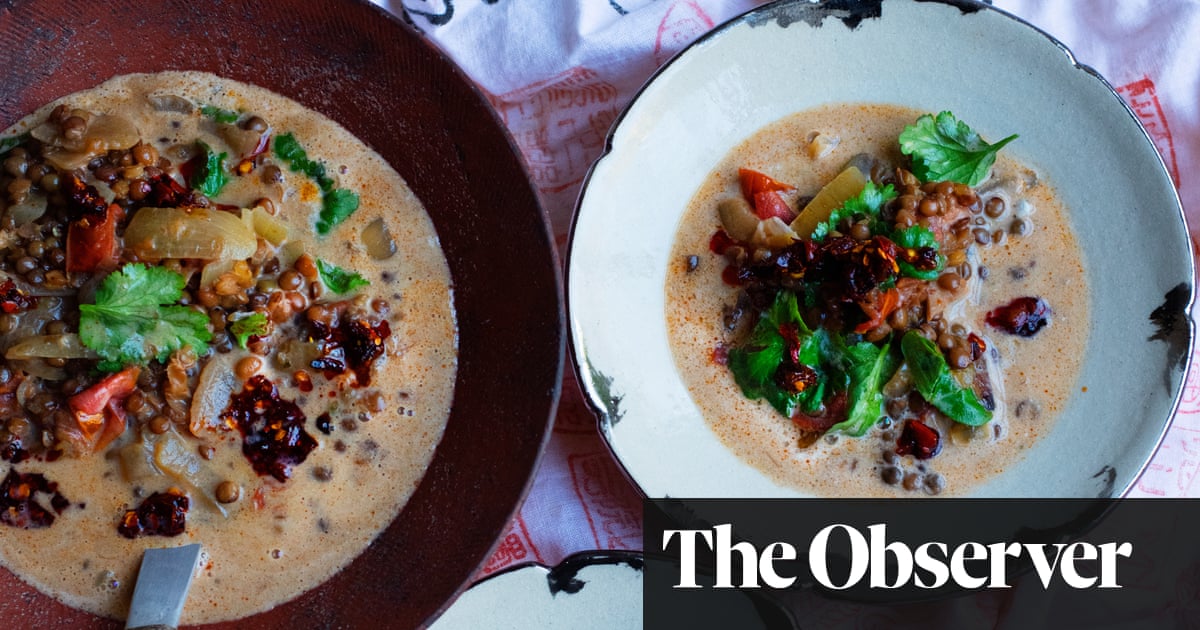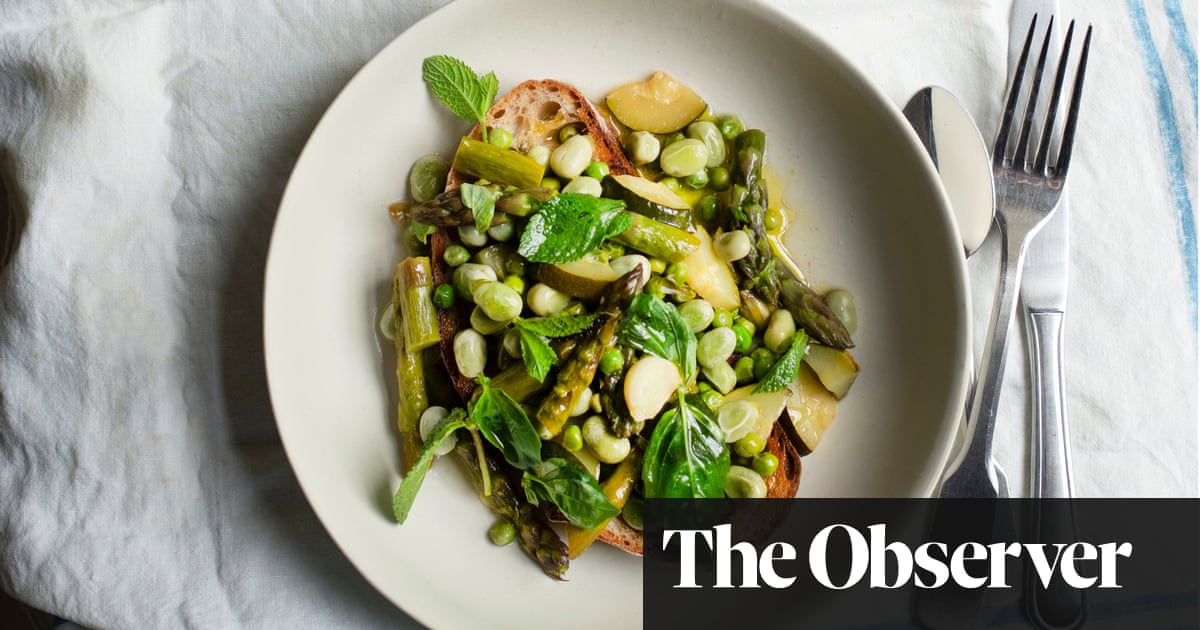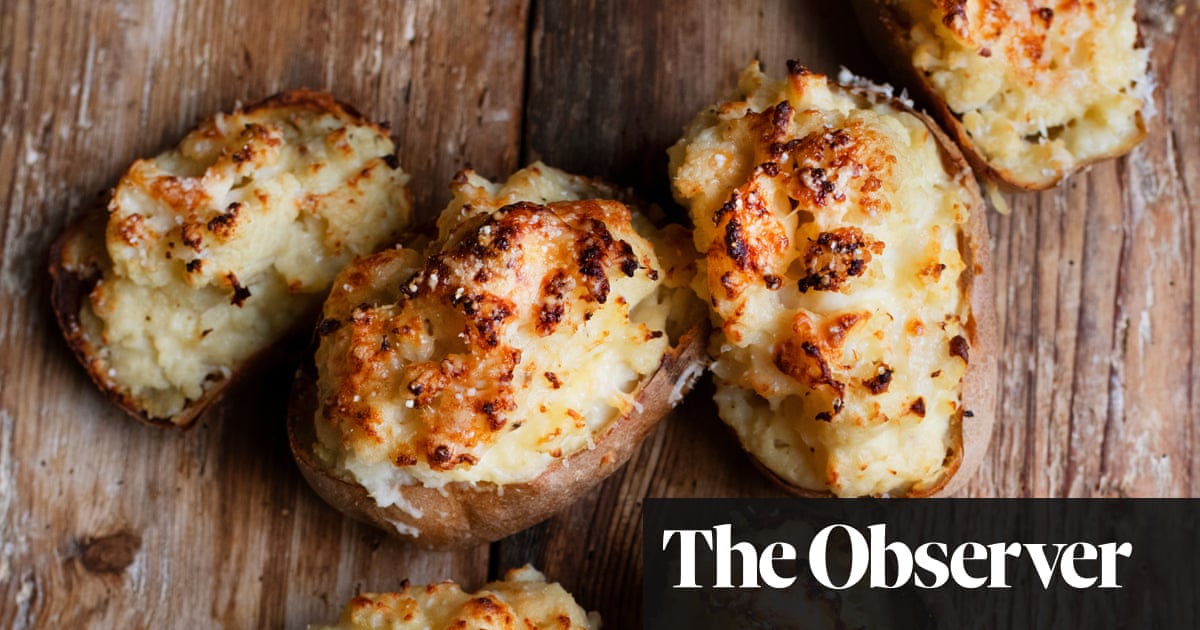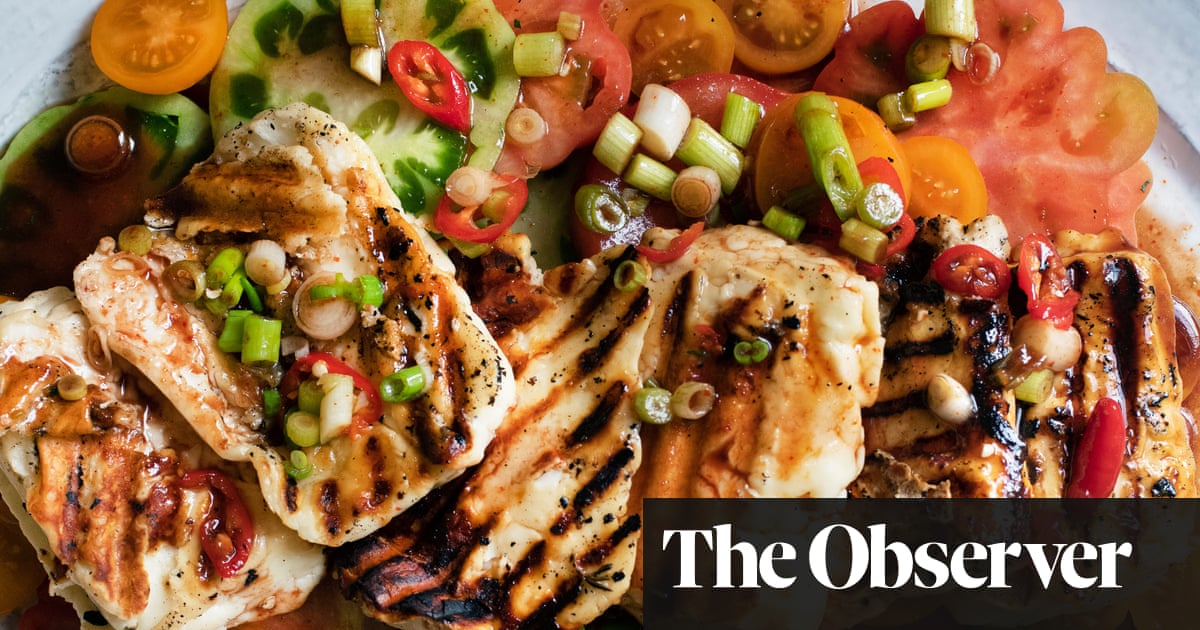
It is the season of lighter eating – substantial salads, vegetable dishes that are good as both principal dish or on the side, and those that celebrate the spring and early summer ingredients. Cannellini beans cooked from scratch with slices of prosciutto and the first tiny Turkish figs; local cauliflower in a citrus-scented sauce for eating with rice or gently chilled as a side, all are suddenly the dish of the day.
Griddled halloumi, tomato and spring onion (pictured above)
This dressing, with the heat of red chillies and nutty notes of toasted sesame, is useful for seasoning cold meat or vegetables, particularly those destined for a lunch box. Last week I used it with some griddled halloumi for a Monday “bento-box” treat.
Serves 3
halloumi 500g
vegetable or groundnut oil a little
tomatoes 350g
For the dressing
sesame seeds 1 tbsp
red chilli pepper 1, mild
soy sauce 3 tbsp
rice vinegar 2 tbsp
caster sugar 1 tbsp
mild chilli powder ½ tsp
chilli paste 1 tsp
sesame oil 2 tsp
spring onions 3
To make the dressing, put the sesame seeds in a dry, shallow pan and toast over a moderate heat till fragrant.
Thinly slice the red chilli pepper, removing the seeds if you wish. In a small bowl, mix together the soy sauce, rice vinegar, caster sugar and chilli powder. When the sugar has dissolved, stir in the toasted sesame seeds, the sliced chilli and the chilli paste. Finely chop the spring onions and add to the dressing.
For the halloumi, slice the cheese horizontally to give 6 thick pieces. Warm a griddle pan, brush the cheese with a little of the oil, then place it on the pan ridges, pressing down firmly with a heavy weight. Leave for 5 minutes or so until the underside is nicely browned, then turn and cook the other side. Remove the cheese from the griddle with a palette knife and keep it warm.
While the halloumi cooks, thinly slice the tomatoes and place them, slightly overlapping on a serving dish. Place the warm halloumi on the tomatoes then spoon over the dressing, leave for 10 minutes before eating.
Crumbed mozzarella and rocket
The exactness of the oil’s temperature is quite important – the cooking time needs to be brief.
Enough for 2
dry, crisp breadcrumbs such as panko, 100g
lemon 1
egg 1
plain flour 4 tbsp
mozzarella 2 x 125g balls
vegetable oil for deep frying
For the leaves
rocket leaves a handful
lambs lettuce a handful
olive oil 2 tbsp
orange or lemon to serve
Put the breadcrumbs in a shallow bowl, then finely grate the zest of the lemon into them. Stir in a little salt and pepper.
Break the egg into a shallow dish and beat lightly with a fork. Put the flour in a small dish. Press the mozzarella into the flour, then into the beaten egg and then into the crumbs. Press down firmly on both sides so the cheese is fully coated in the crumbs.
Heat enough vegetable oil in a deep-sided pan in which to fry the mozzarella – it needs to be at 190C and should be at least 5cm deep. Lower the cheese into the hot oil and fry for 3-4 minutes till golden brown, turning once. Lift out with a slotted spoon and drain briefly on kitchen paper.
Toss the rocket and lambs lettuce in a little olive oil and season lightly with salt, no pepper. Place a mound of dressed rocket on each of two plates, then the fried cheese and a quarter of lemon or orange per person to squeeze over.
White beans, prosciutto and figs
Getting the beans to the right texture – tender, just soft enough to crush between finger and thumb – is what makes it worth cooking them from scratch. By which I mean giving them an overnight soak in water, then simmering them for an hour or so with bay leaves. On occasions where the beans are to be crushed or whipped to purée, or if I am in a hurry, I am happy to use bottled or tinned beans. Should you take that route, heat the drained beans gently in a little water or stock first, so they are warm when you dress them.
Serves 3-4
dried cannellini beans 250g
bay leaves 3
onion 1 small
prosciutto 12 thin slices
figs 8 small
For the dressing
olive oil 2 tbsp
red wine vinegar 2 tsp
dijon mustard 2tsp
basil leaves about 20
olive oil a little to finish
Tip the beans into a large mixing bowl, pour in enough water to completely cover them, then leave them overnight.
The next day, drain the beans and tip them into a deep saucepan, cover with fresh water to at least 3cm above them, then add the bay leaves. Peel the onion, cut in half, then add to the beans. Bring to the boil.
When the water is boiling, remove the froth that is floating on the surface and discard, then lower the heat so the water is simmering and leave to cook for an hour or so until the beans are tender. Pinch one or two between finger and thumb to check for doneness. The time they take will vary according to age and variety, but you can expect them to take a good 75 minutes or more.
Make the dressing: mix together the olive oil, red wine vinegar and mustard. Season with salt and black pepper, then shred the basil leaves and stir into the dressing.
When the beans are ready, drain them except for a couple of spoonfuls of their cooking water, discard the aromatics and toss the beans in the dressing. Set aside.
Fold the prosciutto into curls. Tear the figs open. Tear the basil leaves a little then stir them into the warm beans and season with black pepper.
Transfer the beans onto a serving dish, add the ham folded into curls and the figs and trickle with a little olive oil.
Cauliflower with lemongrass sauce
A mild, coconut and coriander sauce for cauliflower with a nutty crust. You could serve this with rice, or as an accompaniment to a main dish. I also use this as the base for a warm salad with cold roast chicken.
Serves 2-3
lemongrass 3 stalks
garlic 2 cloves
ginger a 35g piece
cumin seeds 1 tsp
coriander seeds 1 tsp
coconut milk 1 x 400ml tin
spring onions 3
olive or groundnut oil 2 tbsp
lime leaves 4 large
cauliflower 1 medium to large
coriander leaves 10g
To make the crumbs
groundnut or vegetable oil 3 tbsp
fresh breadcrumbs 50g
roasted salted peanuts 75g
parsley a good handful
Remove the root end and the outer (tough) layers of the lemongrass. Finely slice the inner stalk and put it into a blender or food processor. Peel the garlic and add to the lemongrass. Peel the ginger, grate coarsely and add to the blender with the cumin and coriander seeds and 100ml of the coconut milk. Process the lemongrass, garlic and ginger to a loose paste.
Discard the roots and the darkest green tips of the spring onions and slice the rest finely. Warm the oil in a medium-sized saucepan, add the spring onions and let them cook for a few minutes till soft but not coloured, then stir in the lemon grass and ginger paste.
Pour in the remaining coconut milk, bring almost to the boil then add the lime leaves, crushing them with your hand as you go (it will release their fragrance), then leave to simmer for about 10 minutes, stirring from time to time. The sauce will thicken a little. Check the seasoning and correct to taste with salt and ground black pepper.
Bring a pot of water to the boil. Break the cauliflower into large florets. Salt the water, drop in the cauliflower and leave till tender – about 7-10 minutes. Drain the cauliflower and add to the lemongrass sauce. Continue simmering while you make the herby breadcrumbs.
In a shallow pan, warm the oil and add the breadcrumbs, cook for a few minutes until they are golden, then add the roasted peanuts, keeping the crumbs moving so they do not burn. Chop the parsley and stir into the crumbs.
Roughly chop the coriander leaves and stir into the cauliflower. Transfer the cauliflower and sauce to a serving dish then scatter with the peanut and parsley crumbs.
Tomato and bulgur wheat
Bulgur, those tiny angular grains of wheat that cook in minutes, are really useful as a base for spring and early summer salads, and a good way to make more expensive, seasonal ingredients go further. A small amount of asparagus, tomatoes or broad beans – all relatively pricey at this point – can go a surprisingly long way once tossed with a grain such as bulgur. A good dressing is essential – I use date syrup and chilli paste for a hot and sour note in this one. You could introduce a little meat or fish here, such as leftover roast chicken, or perhaps some cooked seafood such as prawns.
Serves 4
bulgur 100g
tomatoes 350g
spring onions 5
flat-leaf parsley 20g
fresh mint 20g
pomegranate 1 large
For the dressing
olive oil 3 tbsp
red wine vinegar 1 tbsp
chilli paste 1 tbsp
date syrup 2 tbsp
Put the kettle on. Tip the bulgur into a heatproof bowl, then pour over enough boiling water to cover. Set aside to swell.
In a large mixing bowl, mix together the olive oil, red wine vinegar, chilli paste and date syrup.
Finely dice the tomatoes and spring onions and put them into the dressing. Roughly chop the parsley and mint leaves, and add them too. Cut the pomegranate in half and extract the seeds, taking care to remove any white pith. Add the seeds to the tomatoes.
Check that the bulgur has soaked up all the liquid, then run a fork through it to separate the grains. Stir the bulgur into the other ingredients and transfer to a serving bowl.




